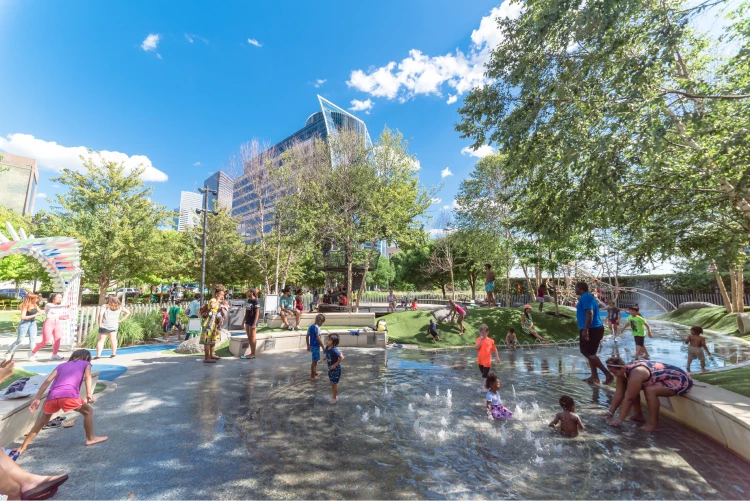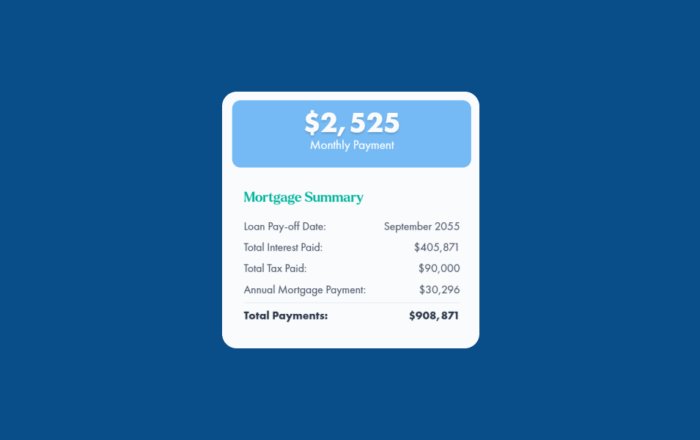Mortgage Calculator
3 minute readEstimate your mortgage payments with BKV Energy's free mortgage calculator
Home > BKV Energy Blog > All Posts > How Hot Does Texas Get in the Summer?
Learn how high temperatures climb, which regions and cities get the hottest, and how heat varies across the Lone Star State.
5 minute read • Last update June 2025

If you’re considering moving to Texas, you’re probably interested in learning more about the unique weather patterns of the Lone Star State. Researching Texas summer weather will no doubt be a top priority. Famous for its soaring temperatures and muggy, humid air, preparedness is key.
In this handy guide, we’ll dive into what to expect when you spend your first summer in Texas, including:
Covering an area of 268,597 square miles, Texas is 1.65 times larger than California, accounting for roughly 7% of America’s total land mass. Spanning vast landscapes incorporating flat desert plains, forested mountainous areas, and everything in between, summer weather patterns range from comfortable sunshine-filled days to heat waves and droughts. Here’s a quick breakdown of some of the most commonly asked questions about Texas summer weather.
While the official date for the start of summer in Texas is typically cited as June 1, the precise start date for each season varies regionally. For example, in coastal east Texas cities like Houston, the shift to summer may begin earlier, while inland regions like Amarillo might witness slight delays.
As with the start of the season, regional variances are to be expected. However, as a general rule, summer usually concludes at the end of August, with September welcoming the gradual decline of scorching daytime temperatures.
The most extreme temperatures across the state are usually recorded in July. Thermometer readings regularly reach the mid to late 90s (°F), and triple-digit temperatures are not unheard of in the hottest of summers.
Precisely, how hot is it in Texas in the summertime? That depends on where you go.
However, 2023 marked the hottest summer in over a decade and one of the most blistering on record, with nearly all locations reporting higher-than-average heat and humidity readings:
The hottest day in Texas history occurred on June 23, 1981, when the temperature soared to a scorching 120°F in Seymour, Texas. This extreme heat wave impacted much of the state, pushing the electric grid to its limits and increasing the risk of wildfires and heat-related illnesses. The record still stands as a stark reminder of how intense Texas summers can be—and the growing importance of grid reliability and home energy efficiency in an era of rising temperatures.
The hottest summer in Texas history occurred in 2011, marked by relentless triple-digit temperatures, widespread drought, and record-breaking heat waves. That year, Texas experienced an average temperature of 86.7°F from June through August. This was the highest ever recorded for any U.S. state during a summer. Cities like Dallas and Austin saw over 70 days above 100°F, severely straining the state’s power grid and water resources. The extreme heat led to devastating agricultural losses, wildfires, and increased energy demand, highlighting the vulnerability of Texas infrastructure to prolonged periods of extreme weather.

| City | MAY | JUN | JUL | AUG | SEP |
|---|---|---|---|---|---|
| Abilene | 85/61 | 91/69 | 95/72 | 84/71 | 87/64 |
| Austin | 85/65 | 91/71 | 95/73 | 96/73 | 90/69 |
| Brownsville | 87/72 | 91/75 | 92/75 | 93/75 | 89/73 |
| Corpus Christi | 86/69 | 90/74 | 93/74 | 93/75 | 90/72 |
| Dallas | 84/65 | 92/73 | 96/77 | 96/76 | 89/69 |
| Fort Worth | 83/61 | 91/69 | 97/72 | 96/72 | 89/65 |
| Houston | 86/68 | 91/74 | 94/75 | 93/75 | 89/72 |
| Laredo | 85/68 | 90/73 | 93/75 | 94/75 | 90/70 |
| Lubbock | 83/56 | 90/64 | 92/68 | 60/66 | 83/58 |
| San Antonio | 86/66 | 91/72 | 95/74 | 95/74 | 90/69 |
| Waco | 84/63 | 91/70 | 96/74 | 96/73 | 90/66 |
Source: https://en.wikipedia.org/wiki/Climate_of_Texas
Given the sheer size of Texas, it’s essential that prospective new residents know what to expect. However, the unconventional shape of the Lone Star State makes it difficult to simply divide the state into North, South, East, and West regions when describing its climate.
In terms of nature, wildlife, habitats, and landscapes, one of the best ways to divide Texas is into 10 distinct ecoregions. However, that’s not ideal from a residential perspective either. Instead, the most accurate way is to split Texas into Northern, Southern, Central, and Western regions.
Thinking of moving to Dallas, Amarillo, or Lubbock? The varied landscape across this vast region comprises a mix of high plains, rolling plains, cross timbers, prairies, and piney woods.
This region experiences a semi-arid climate with year-round sun. Nights may feel relatively cool. However, daytime highs often hover around the mid-90s to low 100s. Although drought-prone, the region is known for occasional thunderstorms, sometimes providing short-term relief from extreme heat.
Stretching from El Paso to Odessa, Western Texas is home to Guadalupe Mountains National Park and Big Bend National Park — named after the deep sweep in the Rio Grande River that divides the United States and Mexico.
Comprising a combination of desert valleys and wooded mountain slopes, elevations range from 2,500 feet to more than 8,749 feet across the region. The average West Texas temperature in summer regularly exceeds 100°F, making it one of the hottest parts of the state, and dust storms are not uncommon.
The central part of Texas encompasses cities like Austin and San Antonio. This area has a varied climate due to a mix of coastal and inland elements. Home to the Edwards Plateau region (more commonly known as Texas Hill Country), elevations range from slightly less than 100 feet to over 3,000 feet.
Residents should be prepared for high daytime temperatures ranging from the mid-90s to the low 100s. However, the humidity often makes the heat feel more intense, and thunderstorms are frequent, meaning there’s a heightened risk of flash floods.
Southern Texas incorporates cities like Houston and Corpus Christi to the East, Laredo to the West, and Brownsville at the tip of the South Texas Plains in the Rio Grande Valley. Thorny shrubs and trees adorn the land, interrupted by scattered patches of palms and subtropical woodlands.
Summers here are characterized by high humidity and average temperatures reaching the mid to upper 90s. The coastal influence brings occasional afternoon showers, providing relief from the heat but also contributing to the mugginess of ambient weather conditions.
The scorching temperatures that define Texas summers stem from a unique combination of geographical and meteorological influences, among a few other factors:
While it’s true that the Texas summer brings intense heat, it’s entirely possible to enjoy the season by taking a few simple precautions to stay safe. Best practices include:
As Texas continues to grapple with the challenges of its intense summer weather, ensuring access to air conditioning and cooling systems fueled by an efficient energy plan is, quite rightly, a primary concern for many residents.
At BKVE, we’re proud to offer simple and affordable electricity to homes across Texas. Our low cost plans make it easier to beat the heat at home without racking up enormous energy bills. Reach out to BKVE today to discover how our affordable energy plans can help you stay cool all summer.
Graham Lumley, Digital Marketing Manager at BKV Energy, leads digital and traditional marketing strategies, focusing on educating Texans about the state's deregulated energy market. With over 8 years of marketing experience, he creates content to help consumers understand and save on their energy bills, bringing a fresh and dynamic approach to the industry.

Estimate your mortgage payments with BKV Energy's free mortgage calculator

Moving from NYC to Houston isn’t just a change in zip code; it’s a change in lifestyle, budget, and opportunity.
Get $50 off your electric bill!
Use code BKVEJOINUS50
Enter your zip code to shop BKV Energy's affordable, fixed-rate Texas electricity plans. Use the promo code for $50 off your electric bill.